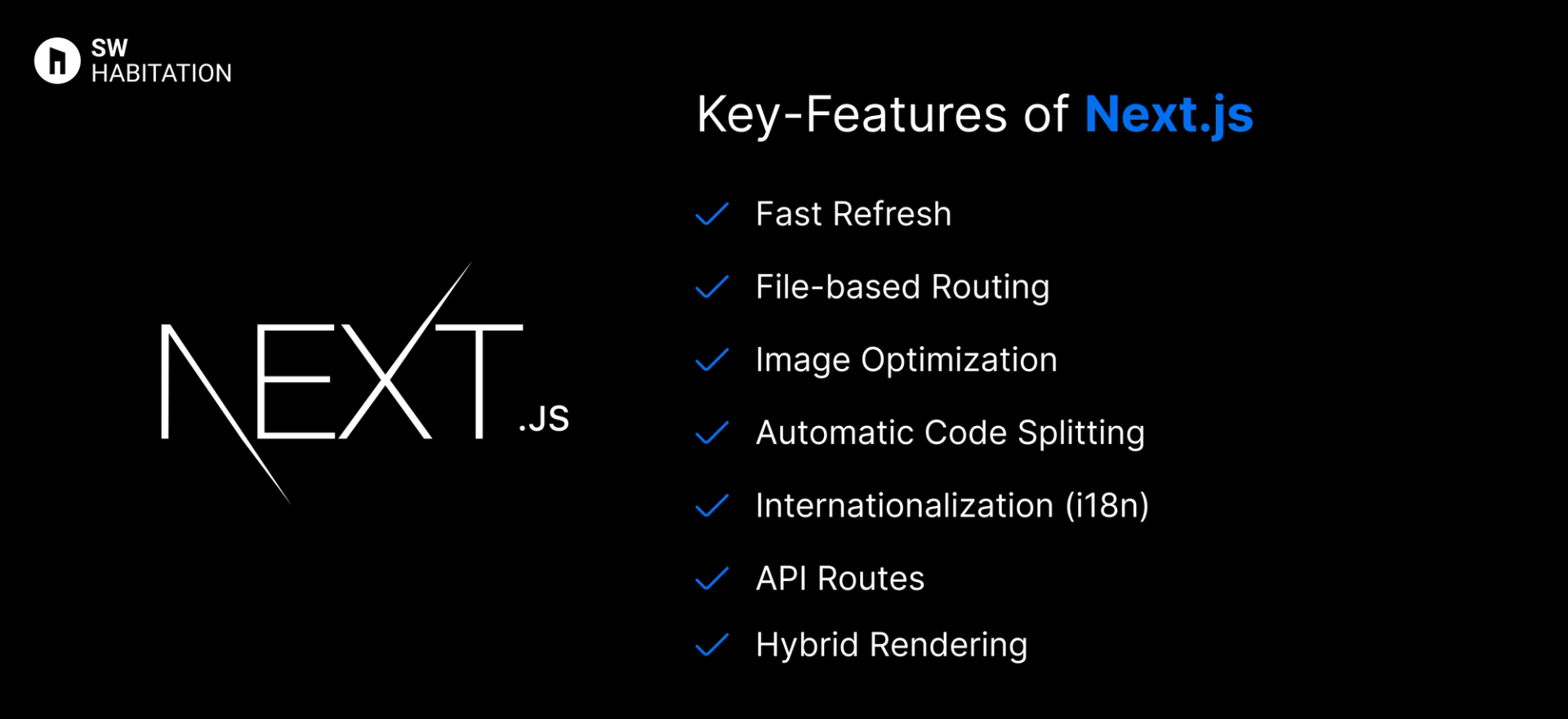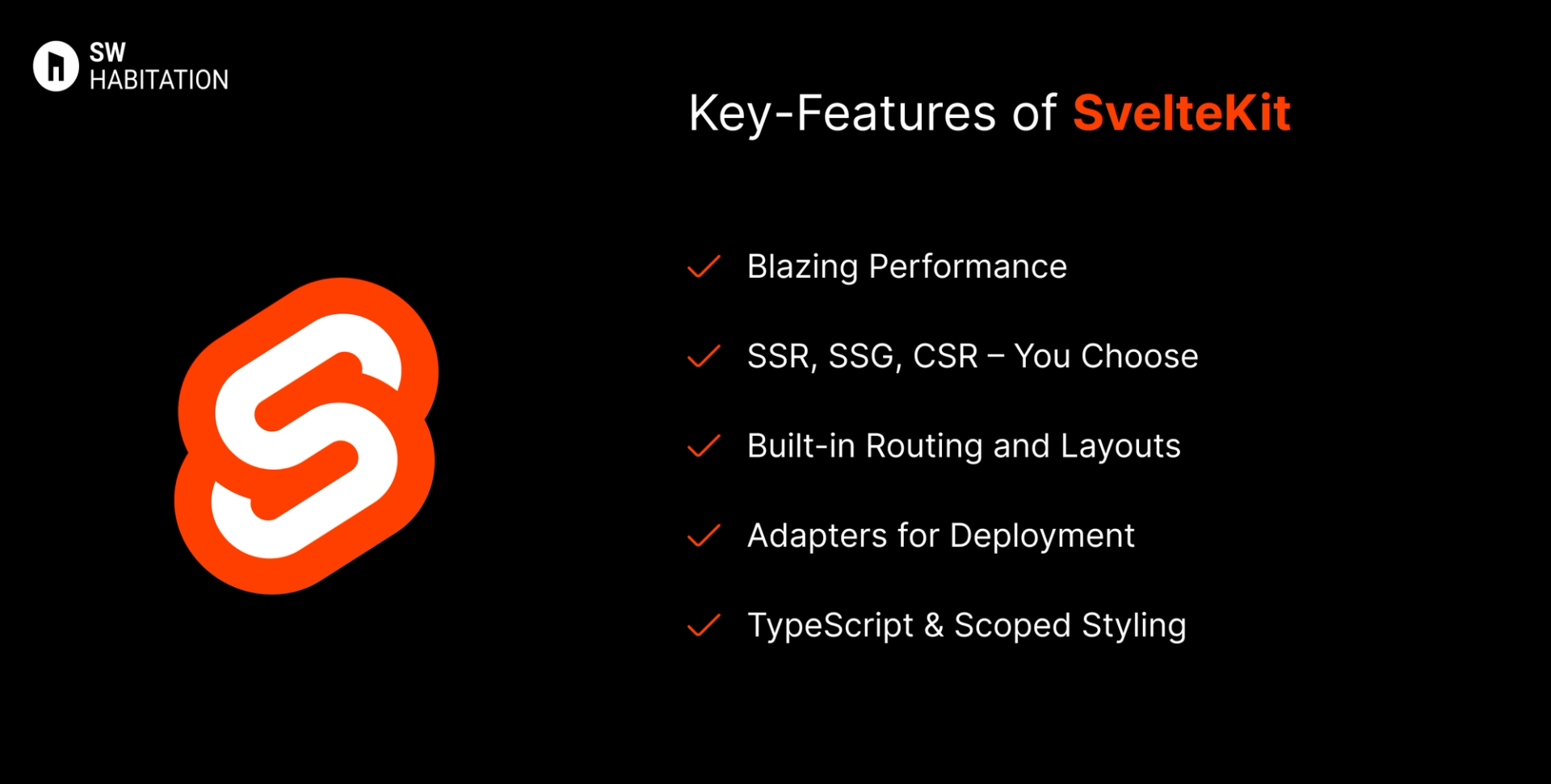Next.js vs. SvelteKit

Next.js

SvelteKit
So, you know when you want to build a website or app, but doing everything from scratch feels kinda overwhelming? That’s where web frameworks come in. They’re like a ready-made set of tools and building blocks that help you get things up and running way faster. Instead of figuring out every little piece yourself, a framework gives you a solid base to build on, and lets you focus on making something cool.
What is Next.js ?
Next.js is a React-based framework that makes it super easy to build fast and scalable web applications. It gives you the power to choose between Static Site Generation (SSG), Server-Side Rendering (SSR), and even Client-Side Rendering (CSR) all within the same project.
Whether you’re making a personal blog, an e-commerce store, or a complex web app, Next.js simplifies the process while optimizing performance.
Key Features of Next.js


- Fast Refresh: Instant feedback while developing, with live reload.
- File-based Routing: Create pages by simply adding files in the pages directory.
- Image Optimization: Built-in image optimization with the next/image component.
- Automatic Code Splitting: Load only the JavaScript needed for each page.
- Internationalization (i18n): Built-in support for multilingual websites.
- API Routes: Easily create serverless functions without needing a separate backend.
- Hybrid Rendering: Combine SSG and SSR in the same project.
Advantages of Next.js
- Flexibility: Mix and match SSG, SSR, and CSR as needed.
- Performance: Fast out of the box, thanks to automatic code splitting and static generation.
- Easy Deployment: Vercel, the creators of Next.js, offer seamless deployment.
- Active Community: Huge community support with tons of plugins and examples.
- SEO-Friendly: Server-side rendering means better SEO, as search engines can easily crawl the content.
Disadvantages of Next.js
- Learning Curve: It is built on React, concepts like SSR, ISR, and routing may confuse beginners.
- Build Times Can Be Long: Incremental Static Regeneration helps, but large sites may still face slow builds or re-builds.
- Limited Flexibility for Routing: File-based routing is simple but can feel restrictive for complex dynamic routes.
- Server Costs: Server-side rendering and API routes may require backend infrastructure, increasing hosting costs.
- Heavy JavaScript by Default: Without optimization, Next.js apps can ship more JS than needed, affecting performance.
What is SvelteKit?
SvelteKit is the full-stack application framework built for the Svelte (https://svelte.dev/) UI library. Unlike traditional frameworks that run in the browser, Svelte compiles your code to highly optimized JavaScript at build time which means no virtual DOM, minimal runtime, and ultra-fast performance.
SvelteKit brings everything you need to build web apps into one unified toolchain routing, layouts, API endpoints, server-side rendering (SSR), static site generation (SSG), client-side navigation, and more — all with smart defaults and deep configurability.
Key Features of SvelteKit


- Blazing Performance: Thanks to Svelte’s compiler-based approach, apps are lean, fast, and minimal.
- SSR, SSG, CSR – You Choose: Build pages using static generation, server rendering, or client-side rendering per route.
- Built-in Routing and Layouts: File-based routing with nested layouts simplifies app structure.
- Adapters for Deployment: Deploy to any platform — Netlify, Vercel, Cloudflare Workers, Node, or static hosting.
- TypeScript & Scoped Styling: Comes with TypeScript support and CSS scoped to components.
Advantages of SvelteKit
- Minimal JavaScript: Only ships what the user needs, no heavy runtime.
- Unified Experience: Routing, layouts, endpoints, and rendering are all built-in.
- Flexible Deployment: Use adapters to deploy anywhere, from edge functions to static hosts.
- Developer Happiness: Clean syntax, fewer abstractions, and fast HMR (Hot Module Reloading).
- Excellent SEO: SSR and pre-rendering make your content crawlable by default.
Disadvantages of SvelteKit
- Smaller Ecosystem: Compared to React or Vue frameworks, it has fewer plugins/modules.
- Learning Curve for Beginners: Svelte syntax is simple, but newcomers may need time to grasp server/client boundaries in SvelteKit.
- Tooling Stability: While stable, SvelteKit is still evolving and may change more rapidly than older frameworks.
- Advanced Use Cases: Handling complex authentication, authorization, or large-scale caching may need custom solutions.
Comparison Between Next.js vs SvelteKit
Use Cases of Next.js
- eCommerce Storefronts like Shopify : Combines fast performance with API-based product data for rich shopping UIs.
- SaaS Dashboards and Apps: It is perfect for interactive UIs, auth, and real-time features using API routes.
- Hybrid Rendering Blog Platforms: It supports static + dynamic content for blogs with SEO and personalization needs.
- Modern Marketing Websites: Fast, SEO-friendly pages with dynamic content and smooth navigation.
Use Cases of SvelteKit
- Technical Blogs & Portfolios
- Dashboards & SaaS Platforms
- Marketing Websites
- E-commerce Sites
- APIs & Endpoints
Other Resources
Conclusion
Web frameworks make building websites and apps a whole lot easier. Whether you’re working on a personal project or something big for work, they help with the heavy lifting—like routing, design structure, and how everything connects.
With support for things like server-side rendering, optimized performance, and developer-friendly features, these tools let you create faster, smarter, and cleaner websites. Just pick the one that fits your style, and start building something awesome 🚀
Frequently asked questions
Is Next.js good for large websites?
Yes, it's fast, scalable, and production-ready.
Does Next.js support API routes?
Yes, you can build serverless functions in the pages/api/ folder.
Is Next.js frontend-only or fullstack?
It's fullstack, It includes frontend UI and backend API routes.
Is SvelteKit production-ready?
Yes. SvelteKit reached 1.0 stable in late 2022 and is now considered production-ready. Many companies are already using it for production apps.
Can I migrate my existing Svelte app to SvelteKit?
Yes. You can move your Svelte components into a SvelteKit project and then set up routing, data loading, and server logic. The migration is straightforward but may require some restructuring.
Does SvelteKit support TypeScript?
Yes. TypeScript support is built-in. You can enable it when creating your project with npm create svelte@latest.
Which rendering modes does SvelteKit support?
SvelteKit supports SSR (Server-Side Rendering), SSG (Static Site Generation), CSR (Client-Side Rendering), and even hybrid setups in a single app.
